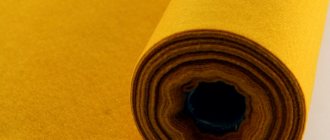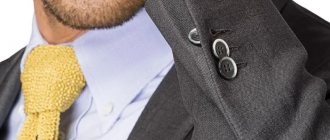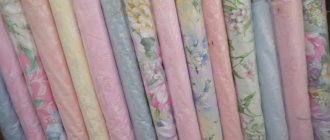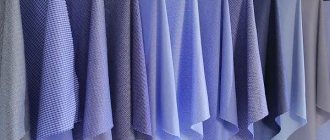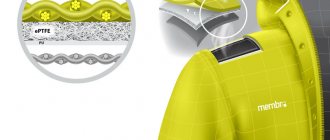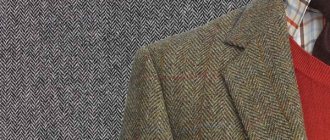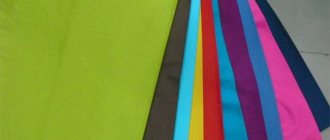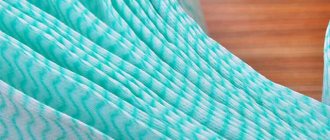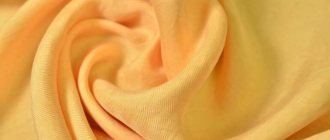Preparation of polyacrylonitrile
To understand whether a material is natural or not, you need to know its production scheme. You could say that PAN is made from air - carbon is used to create these fibers. Otherwise, the resulting material is also called carbon fiber.
Polyacrylonitrile threads were created a long time ago - in 1880. The inventor is Edison, who is known to the world as a scientist who brought many useful things into our lives: an incandescent lamp, a telephone, a telegraph, etc. He created PAN filaments just for light bulbs.
Carbon fibers were later used as a component of rocket engines. This material turned out to be the only one suitable for heat resistance, strength and protection from caustic liquids.
To produce carbon fibers, several chemical operations are carried out. First, oxidation occurs, which produces carbon structures. They are further worked with - heated in nitrogen or argon. The ultimate goal is to increase the carbon amount to 99%.
Expert opinion
Alyona
Fabric expert and technologist Alena Khlebnikova is ready to answer your questions.
Write to us
The raw materials for production are most often viscose and PAN fibers, but lignin, phenolic resins or petroleum and coal residues can also be used. PAN is dyed in liquid form with permanent dyes, so this material is not afraid of fading and molting.
Polyacrylonitrile goes on sale both in 100% composition in the form of fabric and threads, and can be the basis for other materials (up to 50% content). A common type of PAN product is non-woven canvas and yarn. Polyacrylonitrile threads can be either continuous or stapled (cut) - they are used to produce fabric similar in structure to wool. This material is also called artificial wool.
What is pan in knitting threads?
Just don’t confuse the word PAN with the ancient Greek god in this context. Pan is a chemically synthesized fiber. Its properties resemble wool or angora . Somewhat different from viscose or polyester. The development of such fabrics is carried out by the chemical industry. The raw materials are oil and petroleum products, as well as natural gas and coal. Before they appear in their final form before the buyer, they go through many operations and cleanings.
Additive composition and properties
In its composition and appearance, pan is similar to natural wool, which is why it is also called synthetic wool. These are soft, light and pliable threads that are not afraid of moths. It should be noted that according to its characteristics, this is a high-quality material that can retain its shape even when subjected to mechanical stress .
It practically does not fade or fade, and is easy to paint. It is thanks to this quality that products made from this material are bright and with rich shades. However, despite all the positive things, the fiber is far from ideal. Pellets appear on it, it is difficult for air to pass through, it loses elasticity under the influence of temperature, and is also prone to greasy stains that are difficult to clean.
How much pan is added to wool?
Fabrics typically contain 5 to 60 percent pan.
In the future, various everyday clothes for children and adults are sewn from these materials, things for the winter period, various special-purpose clothing, voluminous sweaters, sweaters, jackets with fabric sleeves, and hats are made. The material is introduced into the composition of the threads and mixed with angora, mohair yarn and wool threads. This worsens the properties of natural fiber, but reduces the cost, and, on the contrary, increases strength . If we compare pan and real wool, the first is much worse in its warming qualities.
100% pan - what kind of thread?
In order to understand what qualities a 100% pan has, let’s look at its advantages:
- The fabric is easily dyed, maintaining a magnificent appearance, does not fade or wear out. This is due to the fact that coloring occurs while it is still in liquid form. The color stays inside and easily withstands sun exposure. Now you know for sure that the brightness and durability of the fabric depends not on the dye, but primarily on the technology;
- this material is perfect for sewing clothes;
- the finished product remains in its original form throughout the entire period of use;
- dries quickly;
- not afraid of the appearance of fungus or mold.
The secret to the softness and comfort of wearing products that contain pan is that its properties are similar to those of natural wool. You can wear such clothes even in cold weather, but you won’t overheat in hot weather either.
Description of PAN
Otherwise, PAN is simply called acrylic. It belongs to the class of synthetics, as a result of which it has its own pros and cons that are characteristic of artificial fabrics.
Polyacrylonitrile may look different depending on the thickness of the threads from which the fabric is woven. This can be a non-woven material (for example, a thin blanket) or a knitted cardigan with a fine industrial knit. They also make acrylic yarn, from which needlewomen can knit any product of large or small knitting - in composition it will be 100% or 50% PAN.
It is also difficult to more accurately describe the appearance of the material because polyacrylonitrile fibers are added to other fabrics. You can know for sure whether a product contains PAN fibers by reading the composition on the label. There may be a Russian or English abbreviation indicated (pan), or it may be written - acrylic.
PAN fabric - what is it?
What is PAN fabric, what properties does it have, why is it so in demand? At first glance and in structure, this fabric resembles artificial wool. The abbreviation PAN indicates that it contains polyacrylonitrile fibers, that is, acrylic.
Although the material is produced synthetically, it is endowed with high aesthetic and performance properties and looks presentable. Apparently this is what made her so popular.
For your information! The colors are always bright, the color is rich, the service life is long. The reason for such high quality characteristics lies in the special manufacturing method.
Appearance of finished products made of PAN fabric
Advantages and disadvantages
To decide whether you want to purchase a product made of polyacrylonitrile, you need to familiarize yourself with all the advantages and disadvantages of this material.
There are many advantages, these are:
- The softness and lightness of the fabric, acrylic cardigans can even be compared with cashmere ones in terms of the pleasantness of touching the body.
- This faux fabric doesn't wrinkle, so if you dry and store it carefully, you won't have to iron it. It is also easy to take with you on the road.
- PAN is called artificial wool for a reason - this material is warm enough to be used to make winter sweaters, cardigans and other clothes.
- Some items of workwear can also be made of polyacrylonitrile. It will not deteriorate from contact with caustic liquids: alkalis, acids, acetone or gasoline. Also, if it is necessary to clean clothes from persistent contaminants (for example, paint), you can use rough dry cleaning methods.
- Due to the fact that the threads are dyed in the state of liquid raw materials, they are not afraid of direct rays of the sun or daily wear. The paint will remain on the product until the end (such things don’t even fade).
- Despite the fact that this is an artificial material, it does not cause problems for allergy sufferers. Moreover, dust mites and other insects that love natural fibers do not live in it.
There are also several disadvantages that are common to many synthetic fabrics:
- In acrylic clothing, the skin will not be able to breathe, so if you are prone to sweating or are going to wear the item in a warm room, take this into account. But this can be considered as an advantage for a cold street, since an acrylic sweater will act as thermal underwear.
- Washing clothes in hot water can cause them to stretch. The same applies to ironing.
- Acrylic may pill, so be careful not to rub your clothes against anything. If this happens, they can be easily removed.
- Fabric accumulates static electricity.
- Stains that get on the item will be difficult to clean. The structure of the threads is such that it quickly absorbs dirt, especially oil.
Advantages and disadvantages of PAN
The unique properties of fabrics containing PAN fibers are known to the most discerning fashionistas around the world.
- Acrylic hardly wrinkles, which makes clothes made from this material indispensable on the road or at events where it is necessary to have an impeccable appearance.
- The fabric is soft and light, pleasant to the touch.
- PAN threads have excellent heat-shielding qualities; they can even be used to make winter clothes.
- Synthetic fabric easily withstands the effects of acids, alkalis, gasoline, and acetone. Acrylic products can be dry cleaned.
- The fabric dyes well, you can easily get a canvas of bright, saturated color or with photo printing.
- PAN is hypoallergenic and does not promote the development of dust mites and other harmful microorganisms.
Acrylic fabrics also have disadvantages.
- It conducts air poorly and does not absorb moisture, resulting in a feeling of stuffiness.
- When washed or ironed with too hot an iron, an acrylic product may stretch.
- During wear, the fabric may pill when parts of the clothing rub against each other.
- The material is easily electrified.
- Acrylic quickly absorbs grease and oil, making stains very difficult to remove.
In addition, products made from acrylic yarn should never be dried on radiators or near other heat sources. Drying with hot air will make the product hard and unsuitable for further use.
Material Applications
PAN fibers are used to produce fabric for sewing warm clothes: sweaters, cardigans, etc. They also make various home furnishings: bedspreads, rugs, even soft toys and curtains. This material is suitable for making artificial fur coats and sheepskin coats.
Non-woven fabrics are used in the production of banners, advertising signs, etc. PAN is resistant to temperature changes, so it is also used in technical fields.
Needlewomen leave positive reviews about acrylic yarn made from polyacrylonitrile. It can be purely artificial or diluted with wool, which makes it more accessible for purchase.
What is it used for?
PAN is often used in the production of casual and weekend clothing, as well as home textiles. The products will not tear or stretch for a long time. This fabric is used as the basis for the production of curtains that have folds and folds. They are quite durable and will last for decades. Due to their resistance to ultraviolet rays, they can be hung on windows that face the sunny side of a house or apartment.
Some manufacturers use PAN to produce home textiles: bed linen, panel decorations, blankets, bedside rugs, toys for children, indoor slippers and much more. Quite often PAN is used to produce examples for advertising. This is due to the strength of the material and low price.
It is weather resistant. It is used in the production of signs, awnings and banners, replacing non-durable paper. Polyacrylonitrile fibers are found in various knitting yarns. You can make beautiful and cozy knitted clothes from it.
What types of fabrics are PAN added to?
Quite often, polyacrylonitrile is used to create other materials. Among them are acrylic, nitron, orlon, redon and prelan fabrics. They are characterized by similar properties.
PAN is often used to reduce the price of wool products. This material is added to mohair, wool and angora. The amount of impurities depends on how much the cost needs to be reduced. There are fabrics that add 5% polyacrylonitrile, while others add at least 60% of the material. Things will be warm and inexpensive.
What is characteristic of fabrics with different amounts of polyacrylonitrile fibers
The characteristics of fabrics with different amounts of polyacrylonitrile include:
- No more than 10% polyacrylonitrile fibers are added to knitwear. It is characterized by a pleasant appearance and high operating properties. The addition of such fibers allows you to increase the strength of the material and reduce the process of caring for it. The cost of knitted clothing is high. However, tailored jackets, jackets and coats will be warm.
- If the fabric contains 30% PAN, the fabrics will be high quality and beautiful. The material will be smoother, softer and more durable. At the same time, the thermal insulation properties will be preserved. The fabric will have good breathability.
- If the composition includes 50% PAN, the fabric will have poor breathability. Despite this, it is easy to wash and dry. Pills may appear on the fabric.
Recommendations for care
- Wash in cold water (not higher than 30 degrees).
- Hand or machine washing on a delicate cycle is allowed (separate from other items, otherwise pilling may form).
- You can use powder or liquid detergent.
- It is not advisable to unscrew it, because the wet fabric stretches a lot.
- PAN can withstand cleaning with gasoline or acetone, but products containing phenols or formaldehyde can ruin the item.
- Ironing should be done carefully, with a slightly heated iron, through a damp cloth or gauze. If you press a hot iron directly against the fabric, it will become rippled and stiff. For the same reason, acrylic should not be dried near heaters.
- It is advisable to dry in a horizontal position so as not to stretch the product or deform it.
Production of material
Having become familiar with the technology of fabric production, which is very complex, one can, albeit jokingly, say that the material is created out of thin air:
- The raw material in production is ordinary natural gas, from which hydrocyanic acid and acetylene are first obtained;
- High-grade fibers are produced in special factory conditions. They are continuous, making the canvases smooth and the design clear;
- the fabric is woven in one of two ways: dry and wet;
- it is regenerated with the solvents dimethylacetamide or dimethylformamide.
For your information! The technology was first tested back in 1947.
Raw materials for production
PAN is dyed during the manufacturing process, which is why the canvases are so resistant to fading and shedding. Retains its original appearance for a long time.
If the coloring is done after the fabric is made, it will not last as well, but will fade when washed and fade.
You might be interested in what is special about tent fabrics and where are they used?
PAN: fabric composition, what is it
In a nutshell, it is a 100% synthetic fabric consisting of continuous acrylic fibers. Manufacturers cut them into spatulas, creating a material that resembles soft artificial wool. PAN stands for polyacrylonitrile content in the product.
Production process in detail
PAN fiber FibARM Fiber WB for concrete (105 kg.)
Instructions for use: fiber for concrete - consumption per m3 and technology for introducing fiber.
The most optimal in terms of strength and crack resistance is a fiber-reinforced concrete composition with a PAN fiber concentration of 0.8-1.2 kg/m3. Fiber fiber for concrete at a consumption of more than 2.5 kg/m3 leads to its clumping, a decrease in compressive strength, and also to an unjustified increase in the cost of fiber-reinforced concrete.
| concrete/reinforced concrete | Estimated consumption 0.6-0.9 kg/m3 of ready-made concrete |
| self-leveling floors, floor screed | Fiber consumption 1.5 kg/m3 of finished solution |
| dry mixes | Fiber consumption – 1.0 kg/m3. of the finished solution, taking into account the addition of water. When kneading, fiber is added to the dry mixture, mixed and only then water is added. |
| plaster | Fiber consumption is 0.8-1.1 kg/m3. |
| for paving slabs and stone | Fiber consumption 1.2-1.5 kg/m3 of finished solution |
| for small architectural forms | fiber consumption 1.5-2.0 kg/m3. |
| for flat roof | fiber consumption 1.2-1.5 kg/m3. |
The preparation of fiber-reinforced concrete is carried out in mixers and concrete mixers of forced and gravity type, including in automixers. It mixes well and does not form lumps due to the surface treatment of PAN fiber with a surfactant (lubricant).
There are two options for introducing fiber fiber into concrete:
1) The fiber is mixed with dry components (sand, cement, crushed stone) until uniformly distributed for at least 5 minutes, then water and a plasticizer are added, after which the mixture is thoroughly mixed again. It should be remembered that the time for mixing the solution with fiber fiber increases by 15% compared to the time required for mixing a regular mixture.
2) First, the dry components are mixed, then the mixing water and additives are added, and only after that the reinforcing fiber is added to the running mixer. Mixing time should also be increased by 15-20%. The second option is the only possible one when concrete is delivered in a truck mixer. Then the fiber fiber is introduced directly at the construction site, it is added to the mixture delivered by the concrete truck and mixed for 8-10 minutes.
It is recommended to calculate the required amount of water to obtain a given workability grade of a fiber-reinforced concrete mixture at the design stage of the concrete composition based on the condition that the introduction of fiber in an amount > 0.1% by volume reduces the workability grade of moving mixtures (P1...P3) by one. When designing rigid fiber-reinforced concrete mixtures (Zh1...Zh3), there is no need to adjust the volume of introduced water. The exact amount of water required to achieve the required workability of the fiber-reinforced concrete mixture is determined based on trial batches.
PAN fiber price and packaging
The price of PAN fiber is slightly higher than the cost of polypropylene fiber, but this is compensated by better characteristics of adhesion to concrete and strength of fiber reinforcement. The cost of PAN fiber in a package of 105 kg is the minimum and most profitable, but if you are interested in smaller volumes, we are ready to offer other packaging options.
- PAN fiber FibARM Fiber WB (packaging 0.7 kg.)
- PAN fiber FibARM Fiber WB (packaging 21 kg. Contents 30 bags of 700 g each)
Any consultations on the following issues: - fiber for screed, self-leveling floor; — fiber for concrete, consumption per m3; — fiber fiber price for wholesale purchase; - fiber for plaster can be obtained from specialists. We offer not only the best quality polymer fiber, but also the best service!
Description
Being a synthetic material, PAN makes it possible to obtain continuous fibers with an absolutely smooth structure. For this reason, the material produces products with a smooth surface. The fibers are clear, with an even weave.
To obtain the original texture, the threads are cut into equal parts, which are called staples. They make clothes that perfectly imitate the structure of natural wool.
PAN fabric is radically different from natural materials, but has all the advantages of artificially manufactured ones. Excellent heat retention and increased wear resistance. After heat treatment, the fibers keep their shape. Things made from PAN are soft and pleasant to wear.
Subtleties of hair care with PAN in the composition
Rules for caring for items made from PAN:
- products made from this fabric can be washed both by hand and in a machine, the main thing is that the water temperature does not exceed 30°C;
- When washing, you can add gels, powders and other detergents to the water;
- It is not recommended to twist the products. After washing, it is better to lay them horizontally on the dryer;
- You can iron it, but not with a very hot iron, preferably through gauze.
Note! Stubborn stains that appear on things can be removed with stain removers that do not contain phenol and formaldehyde.
It turns out that caring for things made from PAN fabric is not difficult. This is another significant plus in favor of her choice.
Items made from this fabric can be washed
Scope of application
Thanks to inexpensive production, the use of PAN in the manufacture of clothing significantly reduces its cost, as does the use of wool blend fabric as opposed to natural wool. When using polymer, home textiles are produced: bedspreads, rugs, curtains, furniture upholstery. Synthetic ones add strength to things and retain color. They are actively used to create all kinds of clothing. Synthetic fabric is also used in the production of advertising products. Since the fibers are very strong and resistant to atmospheric influences, banners, awnings, and awnings are made from it. Read about the composition and properties of the material madapolam here.
Non-natural materials
If you have to choose which sweater to choose - expensive and woolen or equally colorful, but made of acrylic, many choose the latter. Simply because acrylic sweaters are like an epidemic - every low-cost brand sells them, and few people think about what the fabric is made of when purchasing. Plus, acrylic sweaters are significantly cheaper than wool sweaters. And people are afraid to buy anything woolen, because they are frightened by myths about the horrors of washing and the harshness of wearing socks.
Forget about the fact that the wool is itchy. These socks, knitted by your grandmother from a loose sweater from her youth, will prick. But a high-quality modern wool sweater is not. Especially if you choose merino or angora.
Why are we so against acrylic? Oh, friends, the reason for this is a carriage and a small cart. Here are the main ones:
- Acrylic is not able to hold its shape and color. Consider it a waste of money - after the third wash, the item will lose its presentation.
- Acrylic is more difficult to remove stains from.
- Acrylic doesn't heat up. At all. This material does not have any warming properties.
- Acrylic collects odors, so you won’t be able to put off washing an acrylic sweater for a long time to avoid the consequences from point 1.
- Adding acrylic will make the sweater stiff.
Regarding point 3, the sight of winter hats, scarves and mittens made of acrylic generally causes hysterical laughter: how will acrylic gloves help me in the cold if they are not able to retain heat?
Why is there so much acrylic on the market? They produce it in tons for a penny and sell it for a penny - people are very willing to buy the latter.
Want to choose a warm sweater? Then you should definitely only go to woolen catalogs; acrylic ones should be avoided. But if you are looking for a joke gift option, and not things for every day, then you can choose something here too.
Characteristics of PAN material
The modern textile industry pleases the consumer with a variety of fabrics of different origins. If previously only natural fabrics were valued, now synthetic samples are in great consumer demand. Material with the abbreviation PAN on labels may contain:
- redon;
- prelan;
- crelon;
- nitron;
- Orlon et al.
A variety of colors
Pan as a raw material is often added to angora, mohair and wool in the production of knitting yarn. The percentage may be something like this: PAN - 70%, wool - 30%. This affects the hygienic properties of the finished product and thermal insulation qualities.
Note! The higher the acrylic content, the cheaper the material will be.
Assortment of knitting yarns containing acrylic
Rules of care
Although PAN tolerates high temperatures well, it should be washed in a solution heated to no more than 40 degrees. Such products are resistant to machine washing modes and the choice of detergents, but it is better not to twist them, but to place them horizontally when drying. If necessary, ironing should be done from the inside out in the “synthetic” mode.
To remove grease, you can use gasoline, acetone, and dichloroethane, but if exposed to formaldehyde or phenol, the fabric may be damaged.


